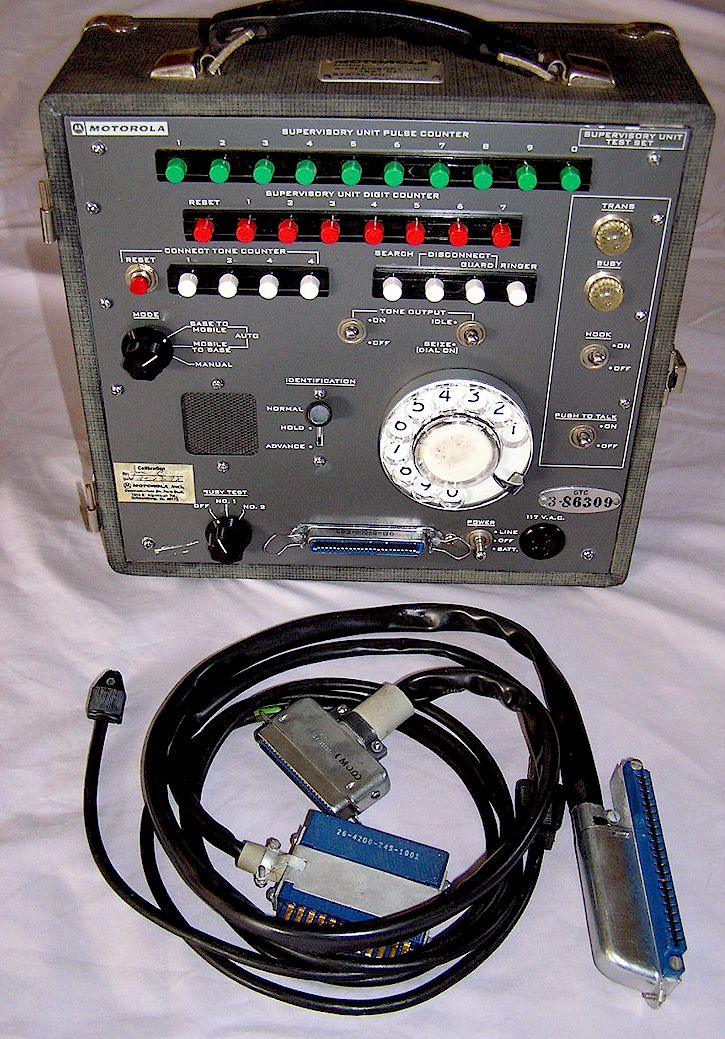
Mobile Telephone
Test Equipment
Throughout the history of the mobile telephone from 1946-1995, it was necessary to develop assorted pieces of test equipment to assist service and adjustment in the field.
Motorola was the most prolific manufacturer of such equipment, with GE and Harris RF following.
MOTOROLA SUPERVISORY TEST SETS
FIRST GENERATION
By far the most common item of specialized test equipment was the "Supervisory Test Set." These were created to test and service the rather complex IMTS supervisory signaling chassis and contain tone oscillators, digit counters, and switching functions which duplicate the actions of the control head. Motorola's first such test set was the T1257, which was intended to test the supervisory chassis of the TLD-1100 and TLD-1220 "MJ" car telephone of 1964. An example is shown below. Note that the set below is numbered T-1267, and dates from 1970, however it appears identical to the T-1257 both physically and electrically. The circuitry uses early transistor digital logic to count the digits, displaying the count on a row of green lamps, and there is a "hold" and "advance" feature to allow reading the number programmed into the supervisory chassis. The test set is also capable of testing the MTS "Manual" decoder features of the supervisory chassis.
Part of the cable plugs between the supervisory chassis and the radio set, and the other part of the cable plugs over the edge of the supervisory board at the top, where the number assignment pin matrix is located. The test set can either be powered by an AC line, in which case the supervisory board is tested while disconnected from the radio with the radio shut off, or the cable is connected between supervisory chassis and radio, the radio powered on, and the power switch on the test set used in the "DC" position.
The first generation test set was the T1257, followed by the T1267, although the two appear identical and I am unable to determine any difference between the two. The T1267 is shown below. The green, red and white button shaped items are colored plastic caps placed over telephone style cartridge lamp bulbs. the example below was used in a GTC (General Telephone) shop in Arkansas through at least the late 1970's. Note that this test set will ONLY test supervisory units in TLD1100 or TLD-1220 "MJ" mobiles, and not Pulsar equipment.
T-1267 Test Set, T-1257
appears the same:
SECOND GENERATION
The successor to the above test set was the S1336 series. These newer sets were capable of testing the Pulsar supervisory boards in addition to the older "MJ" TLD1100 and TLD1220 radios and make use of IC's rather than discrete transistors.
Below are two variations of the S1336 Test Set, the S1336A and B. The differences are that the "B" has a deeper front cover, to allow for a set of cabling and adapters to test Pulsar II supervisory boards. The "A" only tests Pulsar I boards in addition to the standard tests on the TLD1100 and TLD1220 "MJ" mobile phones. The "B" was the final version of this test set. Unlike the predecessor T-1257 and T-1267 units, these test sets make use of IC's and LED indicators, and the socket on the front panel tests "Pulsar" supervisory boards directly. There seems to have been no provision for testing Pulsar I boards while still in the radio equipment.
S1336A Test Set: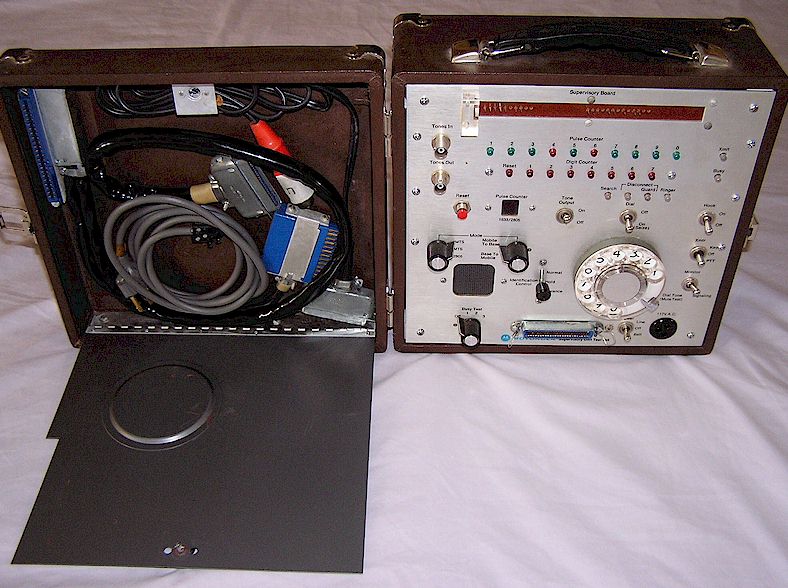
View of Pulsar II board servicing
adapters in innermost compartment of S1336B lid: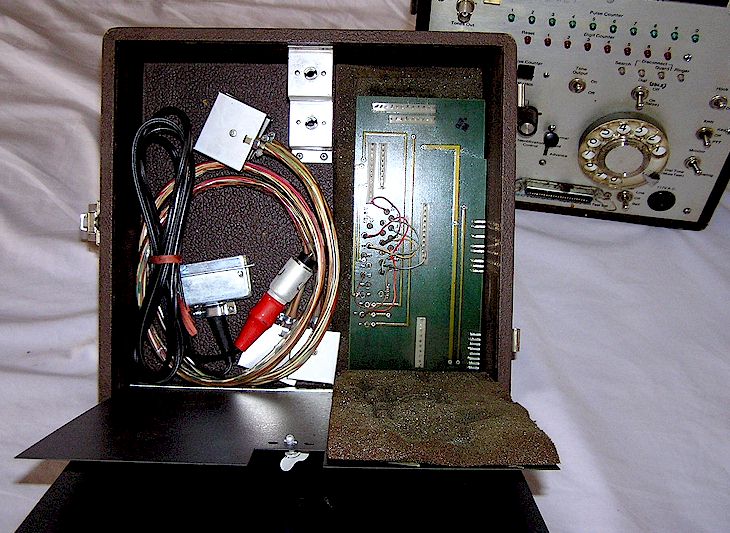
View of cables in the uppermost
compartment of the lid on the S1336B: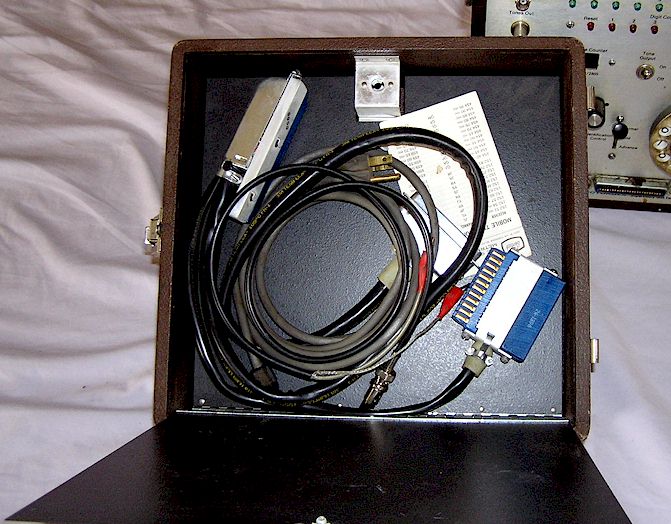
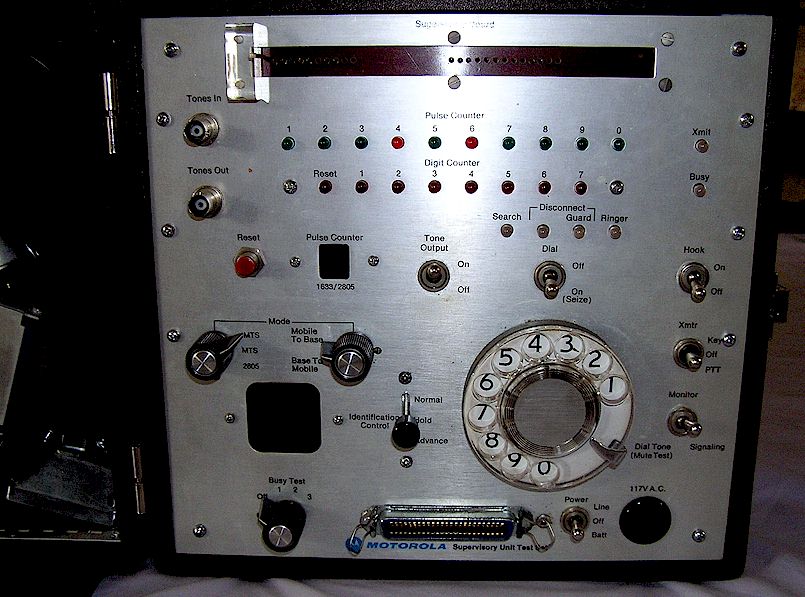
MOTOROLA PULSAR II Control Head Test Set
Motorola made a Pulsar II control head test set to assist service of and verify operation of these rather complicated control heads. It was built into a case the same size as the test sets immediately above and looked slightly similar. Because of the high price of the Pulsar II heads, it was evidently economical to repair them to the component level rather than simply complete replacement of the entire head or even board replacement.
[Photo to follow]
GE MASTR SUPERVISORY TEST SET
Below is a GE version of the Supervisory Test Set, Type 4EX5A10, also called the TL53, intended to test the supervisory chassis in the original MASTR Professional CC56 series mobile telephones. This test set is intended for testing IMTS and MTS only, and will not accommodate Dial or Identified Dial. Compared to the Motorola instruments, the GE is rather crude and simplistic. The GE requires connection to the radio under test rather than just the supervisory board. Unlike the Motorola test sets, the GE could also be ordered with a built-in signal generator (crystal control on the IMTS VHF channels,) to allow simulation of the base station in an "over the air" condition. The housing of the GE test set is metal, unlike the Motorola sets shown above, which are fabric covered plywood.
Note that the GE test set is rather limited in its abilities. It has no digit indicators or method of determining programmed digits, and is incapable of servicing the supervisory chassis itself independent of the radio. There was an adapter to allow testing of the later Executive II IMTS mobile as well, when that radio was used with the GE-supplied Secode IMTS control head. The signal generator option has not been installed in this set, instead a plug button has been placed in the channel selector switch hole.
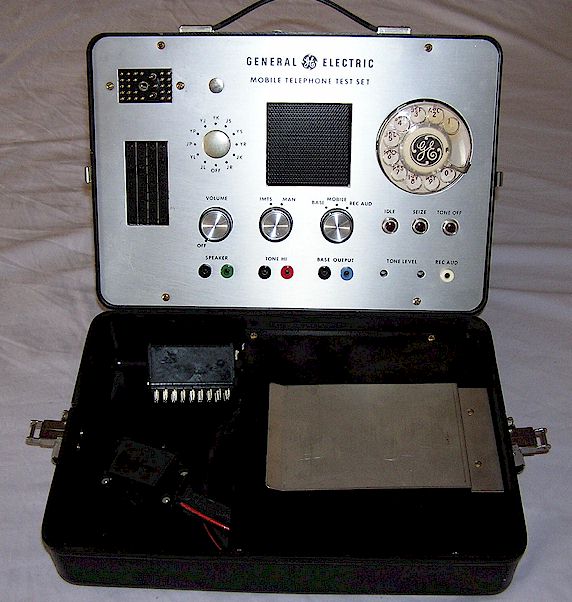
MOTOROLA TEN6055A Test Set / Noise Weighing Adapter
The Motorola - Western Electric adapter below was intended to plug into the metering sockets of the TLD1100 or TLD1220 "MJ" Motorola car telephone receiver and among other things, provide an impedance matching circuit for the measurement of audio, to a Western Electric test specification. It also has a transmitter keying function. Frankly a somewhat useless item for regular maintenance of these telephones, they seem to have been rarely used. They are not needed to perform any tests on the mobile telephone which might assist in repairing it.
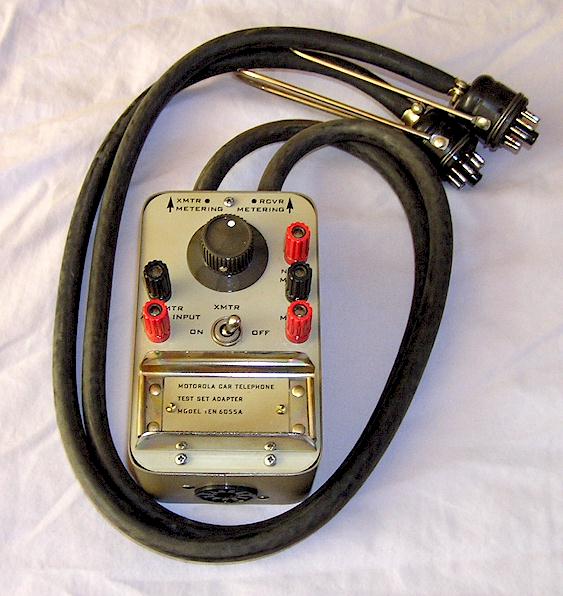
Racal Motorola MJ Channel Element Calibrator
Racal of England designed this interesting device, circa 1965, which allows precision netting of channel elements from the Motorola TLD1100 and TLD1220 mobiles onto exact frequency, without having them in the equipment. In this case, the word "precision" leaves a bit to be desired, but it does work. A socket allows plugging the element into the unit, and the speaker produces the audio signal representing a heterodyne of tones if the channel element is "off frequency." One simply adjusts the channel element for "zero beat" in the speaker. The circuitry of this item consists apparently of an accurate crystal oscillator and a harmonic generator producing carriers every 30 kHz into a mixer. I seem to recall that this example did not work with UHF elements, although there seems no reason it wouldn't, with the correct oscillator crystal installed. I was surprised to find an ordinary uncompensated glass cased crystal as the reference in this unit (in the stamped box on the front panel,) expecting to see a TCXO or an ovenized oscillator.
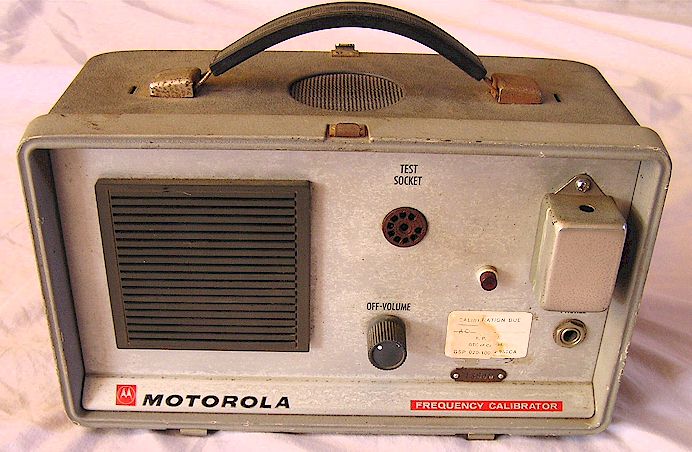
HARRIS RF TEST AND PROGRAMMING SETS
Harris RF manufactured a programmer and a test set for their mobile telephone products. These were housed in black plastic suitcases and are shown below. If you know of other Harris test sets, let me know.
The item below is the Harris RF 4950 Control Unit Test Set. With the proper interface cables it was capable of testing the oldest MTS Harris heads (490) as well as the IMTS rotary dial 4910, 4911, 4912 and the Alpha 40's Series 4940 control head logic board.
The crazed appearance is due to wrinkling of a clear plastic thin overlay sticker placed by the factory.
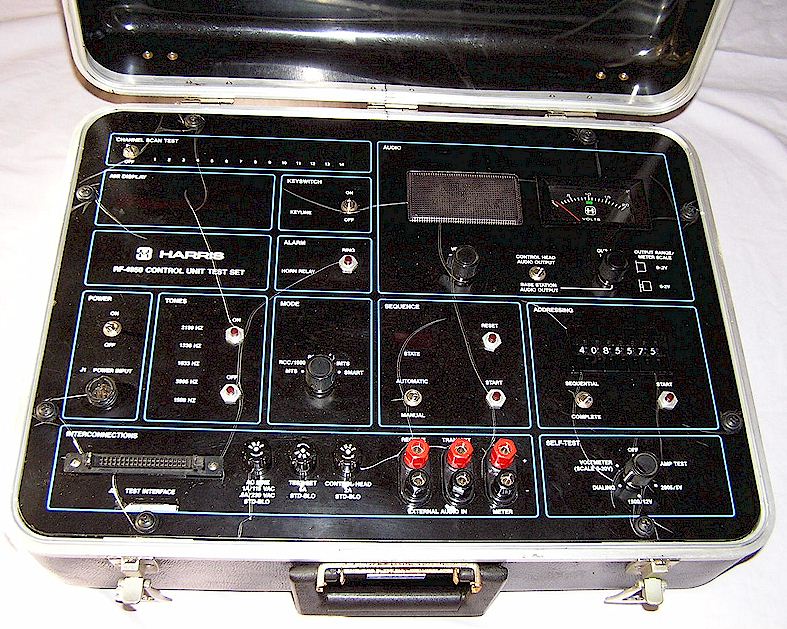
Shown below is the Harris RF4960 Code Plug Programmer, for the Alpha 40 accessory aftermarket control unit packages and the first generation of Alpha 2000 mobile telephones which used a one-time 32x8 binary PROM chip (as did the first AMPS cellular mobile telephones.) Any mistakes in programming the chip were fatal, in that a new chip would be required along with starting over. These same chips were called the "NAM" (Number Assignment Module) in early AMPS cell phones.
Later Harris Alpha 2000 telephones used a EEPROM and were re-programmable without the need for this test set or opening the equipment. They instead required an Epson portable computer and a Harris interface box, with a special program. I do not have a photo of that setup nor an example in the collection. A photo is solicited!
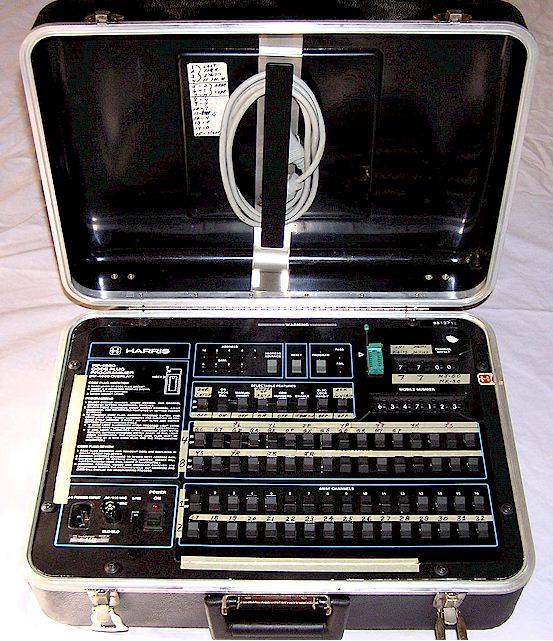
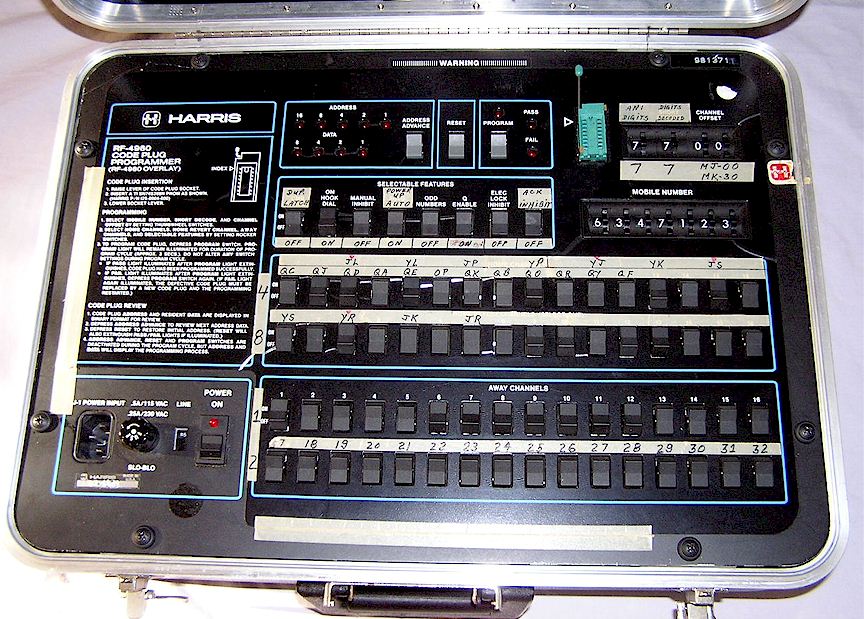
Ver. 12/19/2010 © Geoffrey C. Fors 2009 All rights reserved